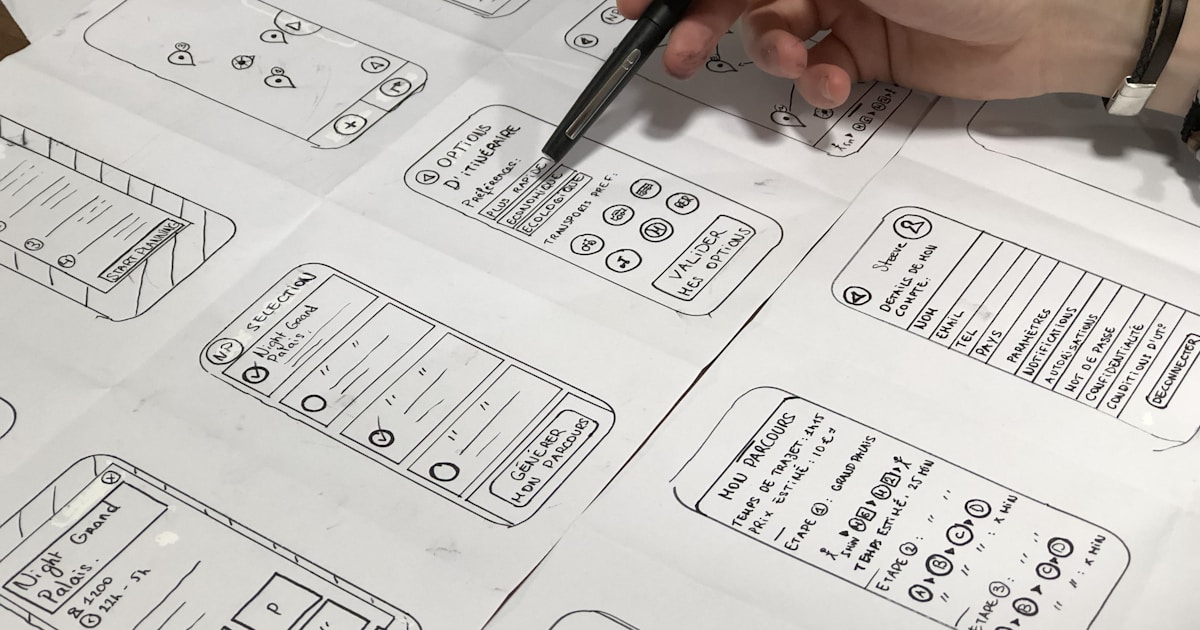The Psychology of Mobile UX: Understanding Touch and Gesture

Mobile UX design isn’t just about making things smaller or fitting more content on a screen. It’s about understanding how people interact with touch interfaces and designing experiences that feel natural and intuitive. The psychology of touch and gesture is fundamentally different from mouse and keyboard interactions, and ignoring these differences leads to frustrating user experiences.
The Psychology of Touch
Touch is Emotional
Unlike mouse clicks, touch interactions are inherently more personal and emotional. When users touch your interface, they’re making a physical connection with your product. This creates a different psychological relationship between user and interface.
Key insights:
- Touch interactions feel more direct and immediate
- Users expect immediate feedback from touch
- Touch errors feel more personal and frustrating
The Fingertip as a Cursor
The human fingertip is much larger and less precise than a mouse cursor. This fundamental difference changes how we need to design interactive elements.
Design implications:
- Minimum touch target size of 44px (Apple) or 48dp (Material Design)
- Generous spacing between interactive elements
- Consider thumb-friendly navigation patterns
Understanding Gesture Psychology
Gestures as Language
Gestures are a form of communication. When users swipe, pinch, or tap, they’re expressing intent through movement. Understanding this “gesture language” is crucial for creating intuitive interfaces.
Common Gesture Patterns
- Swipe: Suggests movement, navigation, or dismissal
- Pinch: Indicates scaling or zooming
- Long press: Implies context or secondary actions
- Double tap: Often used for zoom or selection
Cultural Considerations
Gesture meanings can vary across cultures. What feels natural to one user might be confusing to another. Always consider your global audience when designing gesture-based interactions.
Designing for Touch Psychology
1. Provide Immediate Feedback
Touch interactions should feel responsive and immediate. Users expect:
- Visual feedback within 100ms
- Haptic feedback for important actions
- Clear indication of touch state (pressed, active, etc.)
2. Design for Thumb Navigation
Most users hold their phones with one hand and navigate with their thumb. Design your interface with this in mind:
- Place primary actions within thumb reach
- Use bottom navigation for main sections
- Consider left-handed users in your design
3. Embrace Gesture Affordances
Make it clear what gestures are possible:
- Use visual cues to indicate swipeable content
- Show scroll indicators when content extends beyond the viewport
- Provide subtle hints for discoverable gestures
The Role of Haptics
Haptic feedback adds a tactile dimension to digital interactions, making them feel more physical and satisfying. When used thoughtfully, haptics can:
- Confirm actions and provide feedback
- Guide users through complex interactions
- Create emotional connections with your product
Best practices:
- Use haptics sparingly—too much becomes annoying
- Match haptic intensity to interaction importance
- Consider accessibility—some users may have haptics disabled
Common Mobile UX Mistakes
1. Ignoring Touch Targets
Making buttons or links too small for comfortable touch interaction.
2. Overlooking Gesture Discoverability
Assuming users will naturally discover gesture-based interactions without guidance.
3. Not Considering One-Handed Use
Designing interfaces that require two hands when most users prefer one-handed operation.
4. Inconsistent Gesture Patterns
Using different gestures for similar actions across your app.
Testing Mobile Interactions
Beyond Usability Testing
Mobile UX testing should go beyond traditional usability methods:
- Context testing: Test in real-world environments
- Gesture testing: Observe how users naturally interact with gestures
- Performance testing: Ensure interactions feel smooth and responsive
- Accessibility testing: Verify touch targets work for users with different abilities
The Future of Mobile Interaction
As mobile devices become more sophisticated, we’re seeing new interaction paradigms:
- Voice interfaces: Reducing the need for touch
- AR/VR: Creating new spatial interaction models
- Biometric interactions: Using fingerprint, face, or eye tracking
The Bottom Line
Mobile UX design is about understanding the unique psychology of touch and gesture interactions. When you design with these principles in mind, you create experiences that feel natural, intuitive, and delightful.
The key is to think beyond the screen and consider the full context of mobile use—the physical constraints, the emotional connection, and the natural ways people want to interact with their devices.
Remember: great mobile UX isn’t about fitting desktop functionality into a smaller screen. It’s about creating experiences that leverage the unique capabilities and psychology of mobile devices.
What mobile interaction patterns have you found most effective? How do you approach gesture design in your projects? I’d love to hear about your experiences and continue the conversation.



